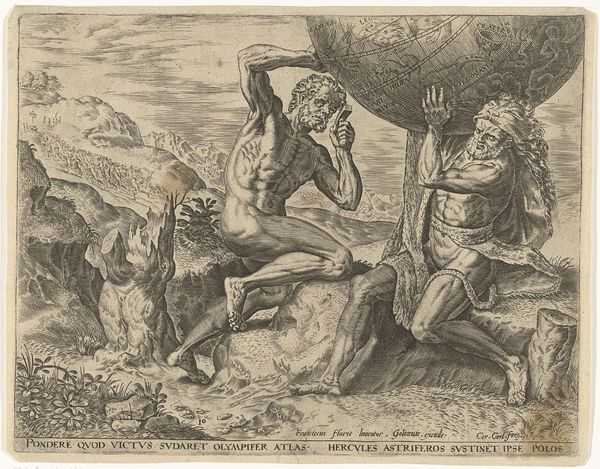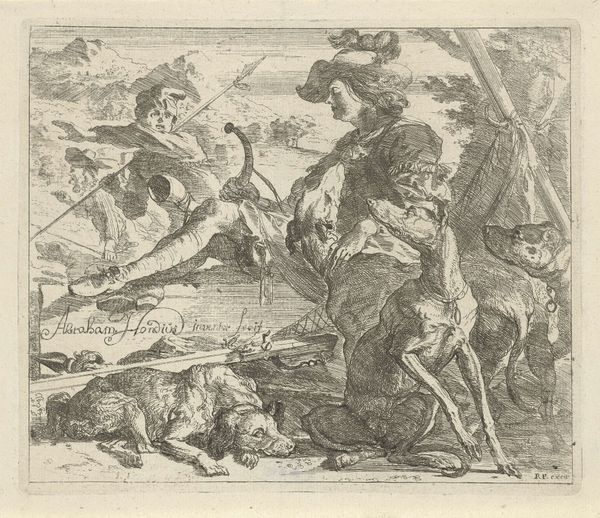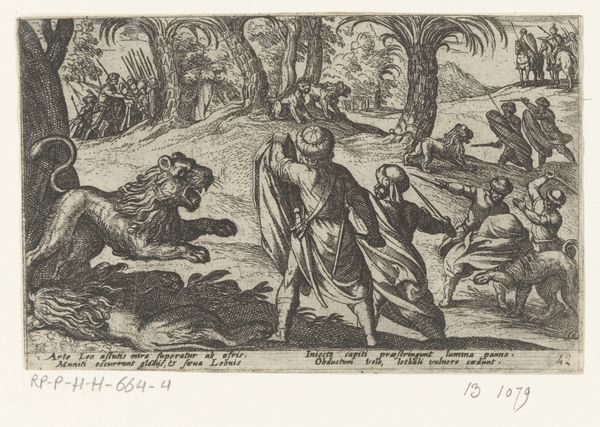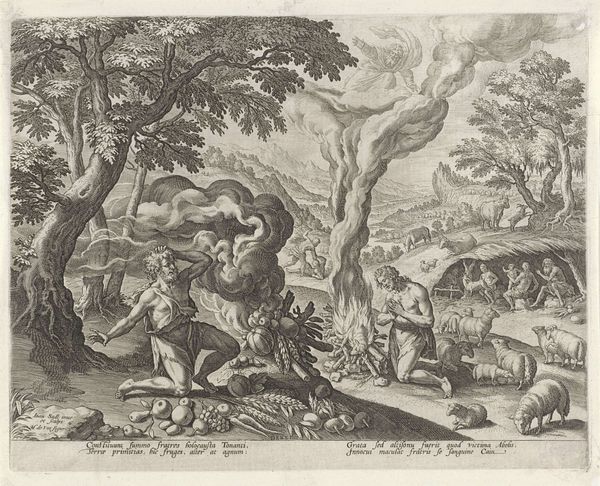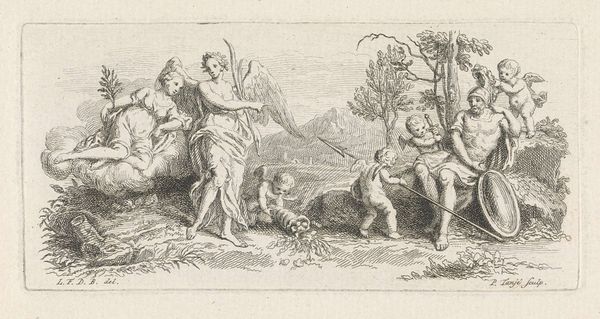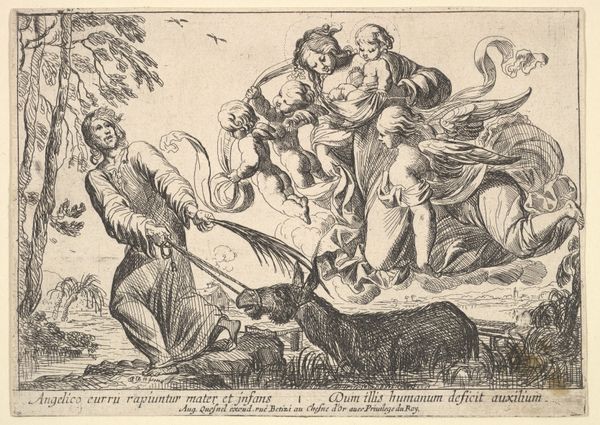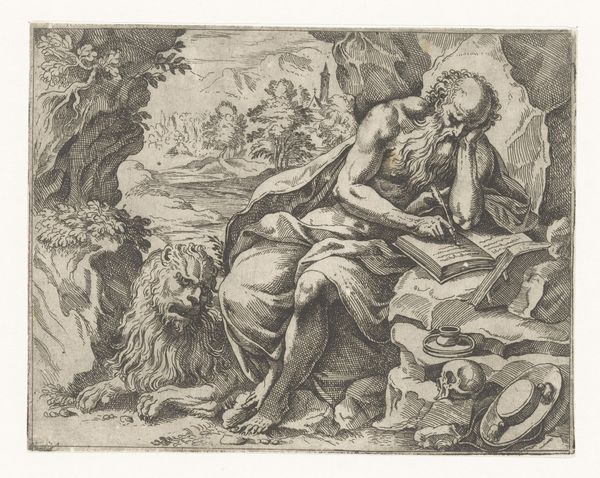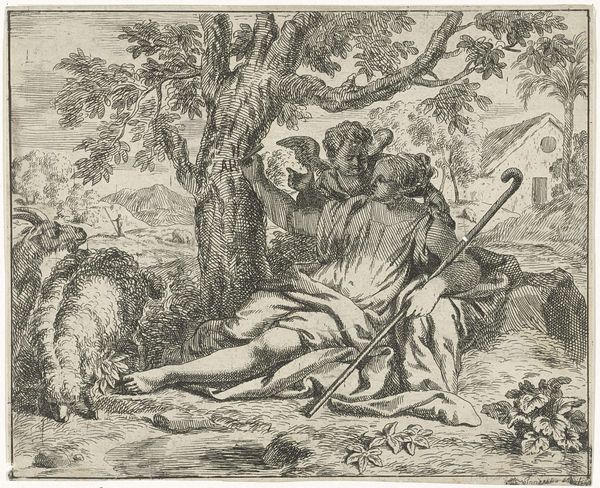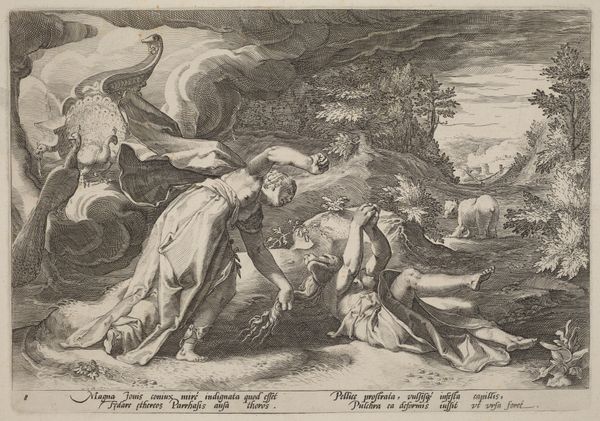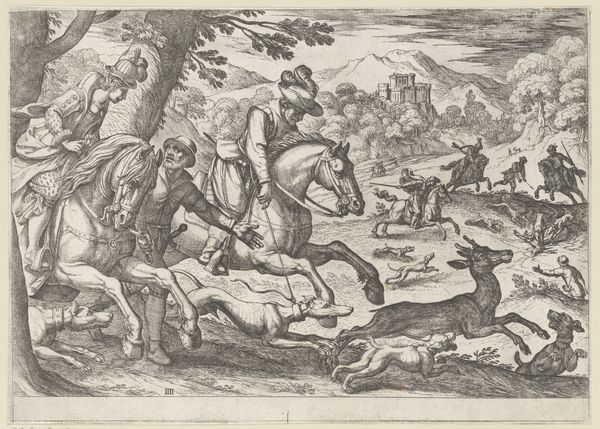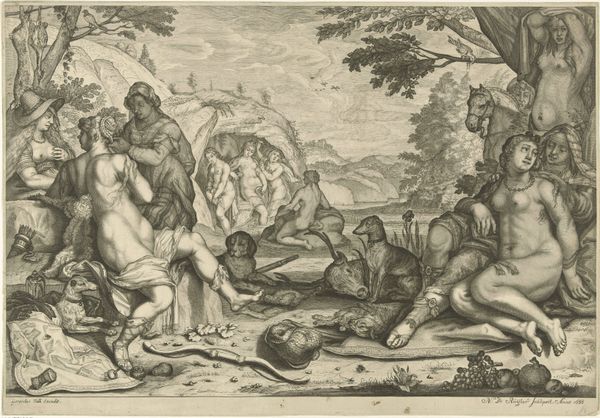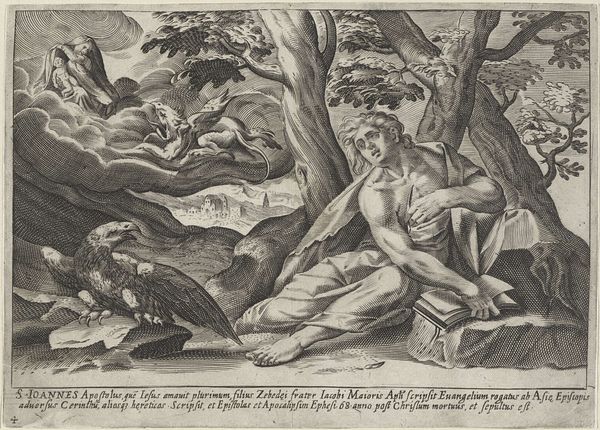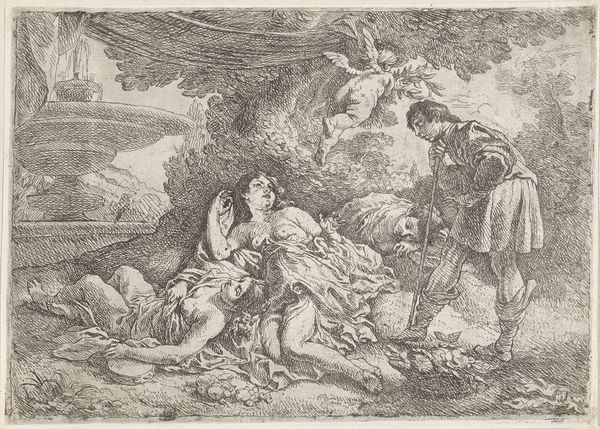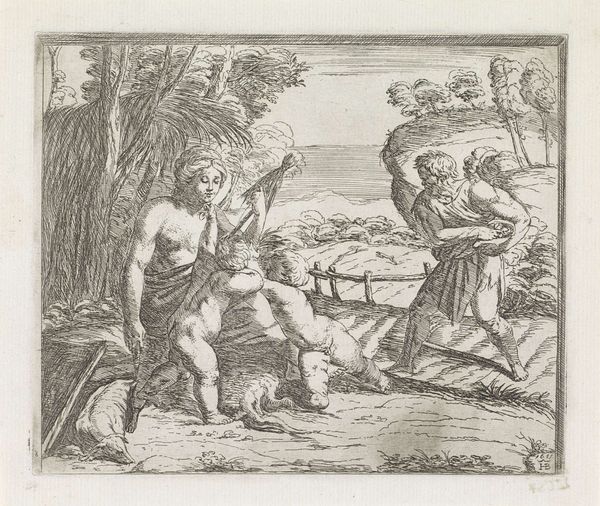
drawing, print, paper, ink, engraving
#
drawing
#
toned paper
#
light pencil work
# print
#
pen sketch
#
pencil sketch
#
landscape
#
mannerism
#
figuration
#
paper
#
personal sketchbook
#
ink
#
ink drawing experimentation
#
pen-ink sketch
#
sketchbook drawing
#
history-painting
#
sketchbook art
#
engraving
#
pencil art
Dimensions: height 215 mm, width 275 mm
Copyright: Rijks Museum: Open Domain
Editor: So here we have "Hercules Supporting the Globe for Atlas," a print made before 1595 by Cornelis Cort. The figures of Hercules and Atlas are so detailed and muscular; you can really see the effort in their bodies. I’m curious about how the labor is presented. What stands out to you in this piece? Curator: It's compelling how Cort presents this mythological scene, isn't it? I am immediately drawn to the contrasting forms. We see the active, almost violent, positioning of Hercules replacing the burdened stillness of Atlas. This work highlights the material realities embedded within the artistic process, the manual skill to create this precise print, to build meaning and transfer knowledge through the very act of production and reproduction. Editor: Interesting! The “act of production and reproduction." Can you elaborate more on that? Curator: Well, think about it: This image wasn't meant to exist in a single, precious state, like a painting, it was intended for wider distribution through printing. This changed not only how art was disseminated, but how it was consumed. And look at the materials used—ink, paper, engraving tools. The quality of the print and its endurance, speaks volumes about artistic labor and choices to appeal to wider audiences with the intention to earn their keep. Editor: I hadn’t considered how the choice of printmaking itself adds another layer to the theme of labor in the artwork. It challenges our contemporary assumptions. Curator: Precisely. It's easy to detach an image from the labor that made it visible and legible. I encourage viewers to challenge that impulse, especially with older images like these, by simply acknowledging the means and social life of its making. It makes viewing more rewarding, I believe. Editor: Absolutely. Thanks to your materialist perspective, I am compelled to reflect more deeply on artistic production and its influence.
Comments
No comments
Be the first to comment and join the conversation on the ultimate creative platform.
